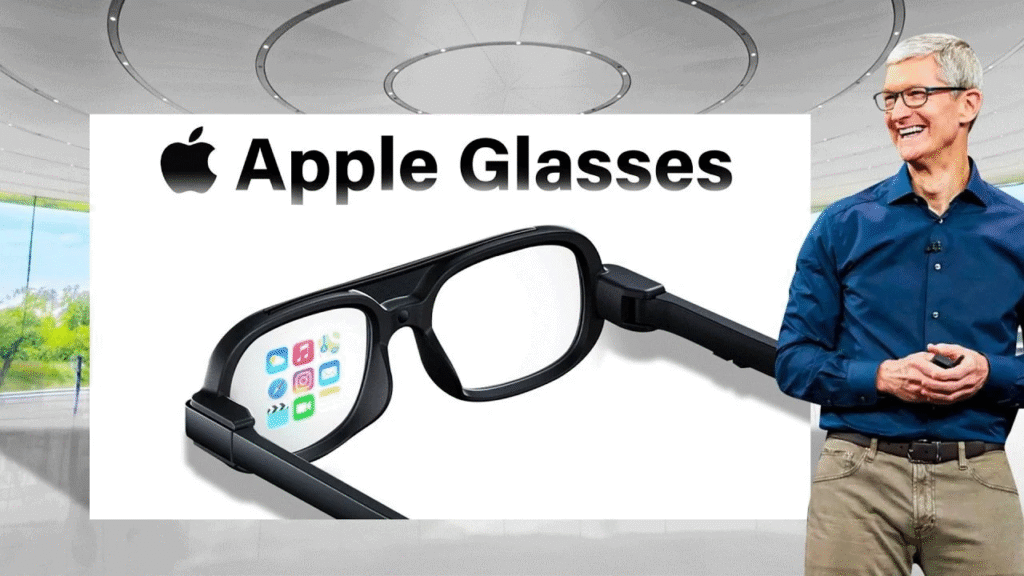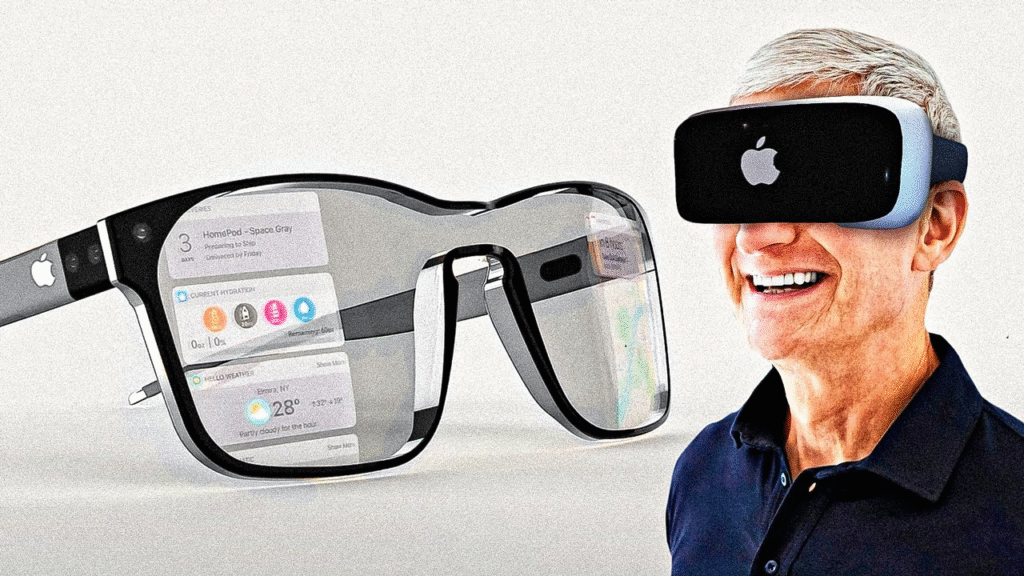Apple is developing smart glasses, which could get launched by late 2026 or early 2027. These glasses will allow you to see digital information that overlays over the real world, such as directions and messages, without the need for a phone screen. The project is a top priority for Apple CEO Tim Cook, who wants to beat Meta (Facebook’s parent company) in the race for cool wearable tech.
The glasses, codenamed N401, have been in development for years. Apple wants them to look like regular glasses, not bulky gadgets. Think of them as a mix between normal glasses and the Apple Vision Pro headset, but much smaller.

What the Glasses Might Look Like
Apple’s smart glasses will focus on style. They might look like regular glasses you can buy today, with thin frames and lightweight materials. Patents show designs similar to safety glasses, but Apple’s final version will probably be more fashionable.
The company has a history of making tech look good. For example, the Apple Watch looks like a normal watch but has hidden sensors and screens. The glasses will likely follow this approach.
How the Glasses Will Work
Using Your iPhone’s Power
The glasses might need an iPhone to work. Instead of putting all the tech inside the glasses, Apple could use your phone to handle the hard work. This keeps the glasses light and stops them from overheating.
Here’s what they could do
- Show directions on the road or in a store
- Translate signs in foreign languages instantly
- Display messages without taking out your phone
- Play games with digital characters in your room
Big Tech Challenges
Making smart glasses is tricky. Apple is trying to shrink powerful tech into tiny frames. Two big problems are
- Battery life: Early versions might only last 3–4 hours.
- Heat: Small devices can get hot quickly.
Apple is making special chips (like the ones in the Apple Watch) to save power. They’re also using microLED screens, which are brighter and sharper than regular screens but hard to make.
Competing With Meta’s Ray-Ban Glasses
Meta’s Ray-Ban smart glasses already let you take photos and talk to an AI assistant. But Apple wants to go further by adding full AR (augmented reality) features.
For example, Meta’s glasses can’t show digital images over the real world. Apple’s glasses could let you see a virtual dinosaur walking in your backyard or a recipe floating in your kitchen.

Why This Matters
If Apple succeeds, these glasses have the potential to completely change the way we use tech each day. Rather than looking at phones, people may receive information while walking, while working, without holding a phone, according to Bloomberg. However, they should be comfortable and affordable, and helpful. Making them as easy to wear as common glasses and yet cramming in enough tech to truly impress is the greatest problem Apple faces with the new Apple Glasses.





